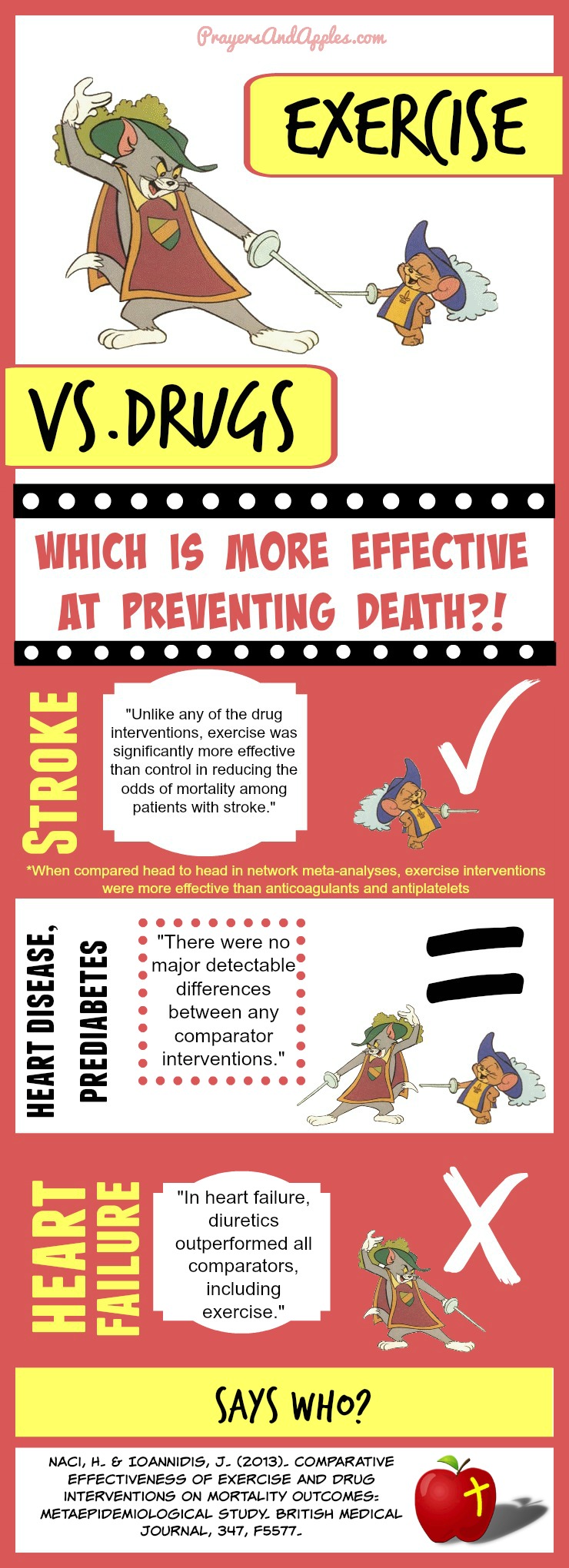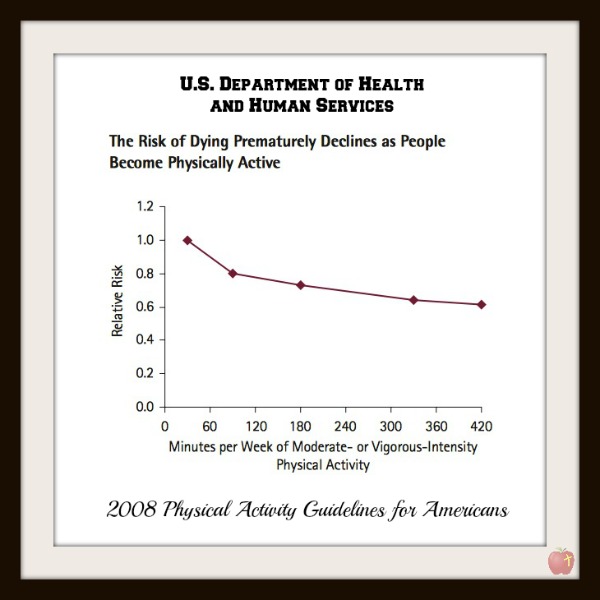If you love yourself a good infographic, then get ready to send me a Valentine, because today’s post is all ’bout that Pinterest life baby!
So here’s the deal: I just started a new class with Dr. Edward Phillips, Director of the Institute of Lifestyle Medicine and co-author of ACSM’s Exercise is Medicine: A Clinician’s Guide to Exercise Prescription (#starstruck, right?!). We’re only one lecture in and I already have SO much information to share with you guys, it’s crazy! But the thing is – I’m really busy with homework and my second class on positive psychology (updates coming soon!) so I don’t have time to put together one of our normal, super long posts :/
So instead, I’m going to devote the rest of my night (usually reserved for binge watching Modern Family winding down from school work) to drinking boxed wine synthesizing one of my new favorite studies into a fun and informative picture!
Ok, maybe a lil Modern Family and white zinfandel will work its way in there… ;)
Hey, look! An infographic!
[10:49pm update] Alright, so after maybeeee one or two dozen episodes of everyone’s favorite Emmy award-winning show (seriously, if you haven’t seen the Modern Family pilot, you’re missing out on life!), maybeee a few trips to the white zinfandel well box… and definitely more than a couple strange looks from my temporary roomie, Angela (seriously, I kept trying to explain that my Tom & Jerry google searches were for science, but she just didn’t get it??), I am now proud to reveal *DRUMROLL PLEASE!* …my Naci & Ioannidis (2013) infographic! *PLEASE HOLD ALL APPLAUSE UNTIL THE END*
For real though, how crazy is that? Naci & Ioannidis reviewed 16 meta-analyses – collectively covering 305 randomized controlled trials with 339,274 participants (#thorough!) – finding that:
“Unlike any of the drug interventions, exercise was significantly more effective than control in reducing the odds of mortality among patients with stroke. When compared head to head in network meta-analyses, exercise interventions were more effective than anti-coagulants and anti-platelets.”
The U.S. Department of Health and Human Services also points out some crazy facts:
- It has been estimated that people who are physically active for approximately 7 hours a week have a 40 percent lower risk of dying early than those who are active for less than 30 minutes a week.
- Studies show substantially lower risk when people do 150 minutes of at least moderate intensity aerobic physical activity a week.
- The most dramatic difference in risk is seen between those who are inactive (30 minutes a week) and those with low levels of activity (90 minutes a week). The relative risk of dying prematurely continues to be lower with higher levels of reported moderate or vigorous intensity leisure-time physical activity.
(And just to drive the point home, a recent study published by the American Journal of Clinical Nutrition found that the risk of early death due to lack of exercise is double that posed by obesity! Researchers claim that 20 minutes of brisk walking a day may be all it takes to lessen a sedentary person’s risk of early death!)
Now, none of this is to say that you shouldn’t take medicine – and it’s definitely not to say that you should ignore your doctor! – but hopefully this post will drive home the importance of exercising. I mean, think about it: when it comes to staying alive after a heart disease or prediabetes diagnosis, exercise has been shown to be just as effective as drug interventions! So what would it hurt any of us to get a little bit more active? :)
Alright, on that note kids, I’m off to bed! ♥
(For anyone super interested, you can view the full Naci & Ioannidis study here!)
Thanks for reading! And feel free to leave any questions you have in the comments section!
 PS. No clue where Tom and Jerry came from lol :)
PS. No clue where Tom and Jerry came from lol :)
References
Ekelund, U., Ward, H.A., Norat, T., et al. (January 2015). Physical activity and all-cause mortality across levels of overall and abdominal adiposity in European men and women: the European Prospective Investigation into Cancer and Nutrition Study (EPIC). The American Journal of Clinical Nutrition. doi: 10.3945/ajcn.114.100065
Naci, H. & Ioannidis, J. (2013). Comparative effectiveness of exercise and drug interventions on mortality outcomes: metaepidemiological study. British Medical Journal, 347, f5577.
Schnohr, P., O’Keefe, J.H., Marott, J.L., Lange, P. & Jensen, G.B. (2015). Dose of Jogging and Long-Term Mortality. Journal of the American College of Cardiology, 65(5): 411-419.
U.S. Department of Health and Human Services. (2008). 2008 Physical Activity Guidelines for Americans.
3/20/15 Update:
For all my exercise over-achievers: Recent research suggests there is a U-shaped association between exercise and health benefits (in other words: more isn’t always better!). For instance, the Copenhagen City Heart Study found that “light and moderate joggers have lower mortality than sedentary non joggers, whereas strenuous joggers have a mortality rate not statistically different from that of the sedentary group.” (See image below.)
For “substantial” health benefits, the U.S. Department of Health and Human Services recommends that adults do at least 150 minutes a week of moderate-intensity, or 75 minutes a week of vigorous-intensity, aerobic activity. According to the 2008 Physical Activity Guidelines for Americans, the benefits continue to increase when a person does more than the equivalent of 300 minutes a week of moderate-intensity exercise. The Guidelines conclude, “current science does not allow identifying an upper limit of total activity above which there are no additional health benefits.” However, recent studies (like the Copenhagen results mentioned above and the articles referenced by Dr. Patricia Thompson in the comments below) are working towards identifying that upper limit – which should remind us all to practice everything in moderation! :)








Love this post. Keep up your awesome work girl! You will move mountains.
xo
Thanks mamacita! ♥ xo
Keep up the great work, lady! I love this stuff! I’m an avid exerciser, so I enjoy reading this stuff. Though, I’m having a hard time reconciling what I want to believe about the benefits of exercise for my life, and some of the recent research which suggests I need to dial it back…
http://time.com/3709816/moderate-exercise-is-best/
http://time.com/3692668/when-exercise-does-more-harm-than-good/
Thank you so much! And you bring up an excellent point! I just read the Copenhagen Heart Study (that second article references) a few weeks ago – I added some edits at the end of post to reflect its results! Guess it just goes to show: When it doubt, moderation is best! :)